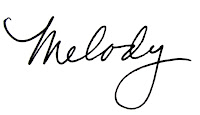 Occasionally I want to add more to a piece and not have an obvious join with a connector strip. This calls for a flip and sew technique.
Occasionally I want to add more to a piece and not have an obvious join with a connector strip. This calls for a flip and sew technique.Here's the new section that I want to join my already quilted main section. The red strips will disappear into each other in the quilting and it will appear to be all one piece.
I hope.
To begin, I will need to cut backing fabric to size and cut a piece of batting to insert between the top and backing. Both will be slightly larger than the patchwork piece to allow for shrinkage when it is quilted.


 Here I am showing that I want to line up my top piece with the seam on the already quilted piece. Pinning carefully is a good idea.
Here I am showing that I want to line up my top piece with the seam on the already quilted piece. Pinning carefully is a good idea.I will line up the top, right sides together, and the backing fabric, also right sides together, and leave the batting out of this part for now. Then I will sew a nice 1/4" seam joining the quilted part and the top and bottom of the new section. Next comes the batting, which is sewn by butting it up against the seam allowance and joined with a wide zig zag stitch.


 After the batting is stitched in place, I will carefully press the top and backing fabrics over the batting, pin and prepare to quilt it.
After the batting is stitched in place, I will carefully press the top and backing fabrics over the batting, pin and prepare to quilt it. Only the new section needs to be quilted, and the rest of the quilt is to the left of my machine needle.
 And that's all there is to that technique. I will be adding more width and length to this piece, but have yet to decide if it will be connector strips or flip and sew.
And that's all there is to that technique. I will be adding more width and length to this piece, but have yet to decide if it will be connector strips or flip and sew.O By the way, I have collected all the QAYG posts and they can be accessed by looking on the side bar under Patterns and Tutorials.





That is the method I usually use. I like it the best even though you do have to quilt the piece you've added as you say, it's to the left.
ReplyDeleteI love the quilt too!
Your quilt looks great. The seam has disappeared. Fun back.
ReplyDeleteMelody, One thing I don't understand about this post. Why don't you quilt the second added piece before sewing it to the finished quilted piece (as you usually do)? Couldn't you quilt both pieces, leaving a little fabric at the seam allowance unquilted until the seam is sewn?
ReplyDeleteYou have SUCH an eye for color! Great combinations!
ReplyDeleteJudith, I am trying to match up the stripe parts and connect and allow the red to continue without obvious interruption. And especially I am demonstrating the flip and sew technique, a necessary one in some cases. A connector strip would disconnect my stripe unless I inserted a stripe piece into it. There is always more than one way to skin a cat.
ReplyDeleteMel, I love this quilt! Just the right balance of stripes and your fabulous hand-dyed fabric. WOW!!! Thanks for sharing your tips and tricks for the QAYG technique. I have two projects to complete by November, but after that I'm going to go back to piecing for awhile using QAYG.
ReplyDeleteI'm not dure I understand it all (not your doing), but I simply can't read your text, my eyes go back to your photographs every time I try to understand what you are explaining. I'll get there in the end, but for now I let my eye enjoy your eyecandy.
ReplyDeleteIt reminds me of some of Yvonne Porcella's quilts -- geometric, very colorful, fun!
ReplyDeleteThis comment has been removed by the author.
ReplyDeleteI love this quilt - the effect of the dip-dye colors you used is fabulous! I've pinned it to my "Quilty Goodness" board on Pinterest (with proper credit, of course!). Feel free to follow me if you'd like: http://pinterest.com/lipglass/quilty-goodness/
ReplyDelete